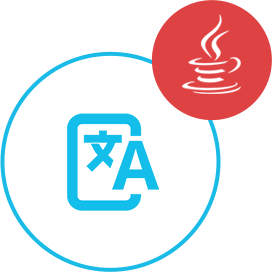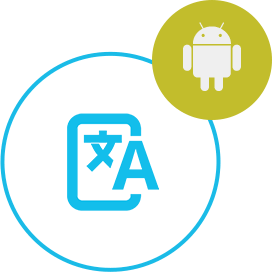Python English to French Translation with GroupDocs.Translation Cloud API
GroupDocs.Translation Cloud API is a powerful and easy-to-use tool for translating text from English to French using Python. With a simple integration, developers can automate the translation process and achieve accurate and reliable translations. The API supports a wide range of content types, including documents, websites, and more, making it a versatile solution for all translation needs. Additionally, it offers advanced features such as custom glossaries and terminology management, allowing users to fine-tune translations to fit specific requirements. Overall, GroupDocs.Translation Cloud API provides a seamless and efficient way to translate English to French content using Python, making it a valuable asset for any localization project.
// Get your App SID, App Key and Storage Name at https://dashboard.groupdocs.cloud (free registration is required).
public TextResponse TranslateText(Configuration conf)
{
string pair = "en-fr";
string text = "Python English to French Translation with GroupDocs.Translation Cloud API";
TranslationApi api = new TranslationApi(conf);
TranslateTextRequest request = api.CreateTextRequest(pair, text);
TextResponse response = api.RunTranslationTextTask(request);
return response;
}# Get your App SID, App Key and Storage Name at https://dashboard.groupdocs.cloud (free registration is required).
curl -X POST "https://api.groupdocs.cloud/v1.0/translation/text" \
-H "Authorization: Bearer TOKEN" \
-H "Content-Type: application/json" \
-d '[{"pair":"en-fr", "text":"Python English to French Translation with GroupDocs.Translation Cloud API"}]'
# and response
{ "status":"ok", "message":"Text translated successfully", "translation":"....." }// Get your App SID, App Key and Storage Name at https://dashboard.groupdocs.cloud (free registration is required).
import com.GroupDocs.translate.api.*;
import com.GroupDocs.translate.Configuration;
private static void setUpConfig() throws Exception {
Configuration.setAPP_SID("XXXXXXXX-XXXX-XXXX-XXXX-XXXXXXXXXXXX");
Configuration.setAPI_KEY("XXXXXXXXXXXXXXXXXXXXXXXXXXXXXXXX");
}
static String TranslateText() {
pair = "en-fr";
text = "Python English to French Translation with GroupDocs.Translation Cloud API";
TextInfo textInfo = new TextInfo(pair, text);
TranslationTextRequest translationTextRequest = new TranslationTextRequest(TextInfo.toString());
TranslationTextResponse translateTextResponse = TranslationApi.TranslateText(translationTextRequest);
return translateTextResponse.translation;
}# Get your App SID, App Key and Storage Name at https://dashboard.groupdocs.cloud (free registration is required).
from groupdocstranslationcloud.configuration import Configuration
from groupdocstranslationcloud.api.translation_api import TranslationApi
from groupdocstranslationcloud.models.translate_text import TranslateText
from groupdocstranslationcloud.models.translate_document import TranslateDocument
# enter valid apiKey and appSid
configuration = Configuration(apiKey="", appSid="")
api = TranslationApi(configuration)
pair = "en-fr"
text = "Python English to French Translation with GroupDocs.Translation Cloud API"
translator = TranslateText(pair, text)
response = translator.to_string()
res_text = api.post_translate_text(response)
print(res_text.translation)
Features
Translation
GroupDocs.Translation Cloud provides a powerful language translation API that allows users to translate text from English to French and vice versa. This API supports high-quality and accurate translations using advanced machine learning algorithms.
Python SDK
GroupDocs.Translation Cloud offers a Python software development kit (SDK) that enables developers to easily integrate language translation capabilities into their Python applications. The SDK provides pre-built methods and functions for seamless translation integration.
Multiple File Formats
The translation API supports various file formats, including plain text, Microsoft Word, Excel, PowerPoint, PDF, and more. This flexibility allows users to translate content from a wide range of file types with ease.
Customization Options
GroupDocs.Translation Cloud offers customization options to tailor the translation process according to specific needs. Users can specify language preferences, handle special characters, and control the translation output to best fit their requirements.
Secure and Reliable
The API ensures secure and reliable translation processes, with support for authentication, data encryption, and secure communication protocols. This helps in safeguarding the confidentiality and integrity of the translated content.
Frequently Asked Questions
How do I authenticate with GroupDocs.Translation Cloud API in Python?
You can authenticate with GroupDocs.Translation Cloud API in Python by providing your API key in the request headers.
Can I translate a text from English to French using GroupDocs.Translation Cloud API in Python?
Yes, you can use GroupDocs.Translation Cloud API in Python to translate a text from English to French.
What is the rate limit for using GroupDocs.Translation Cloud API in Python?
The rate limit for using GroupDocs.Translation Cloud API in Python depends on your subscription plan. Make sure to check the documentation for the specific details.
Is there a Python SDK available for GroupDocs.Translation Cloud API?
Yes, there is a Python SDK available for GroupDocs.Translation Cloud API which makes it easier to integrate the translation services into your Python application.
How can I handle error responses from GroupDocs.Translation Cloud API in Python?
You can handle error responses from GroupDocs.Translation Cloud API in Python by checking the HTTP status code and reading the error message in the response body.



